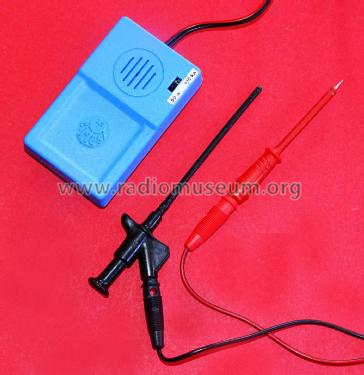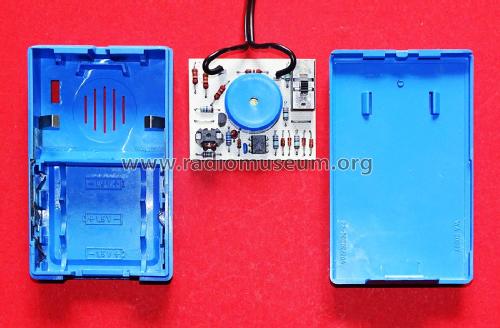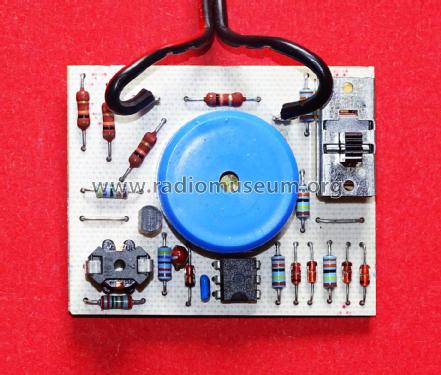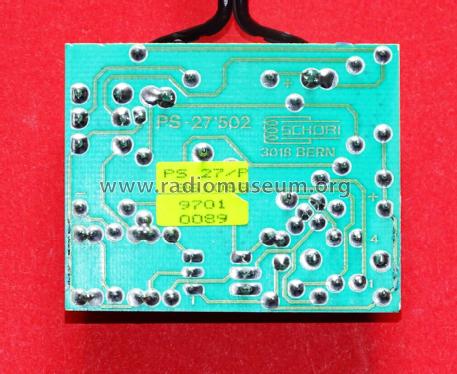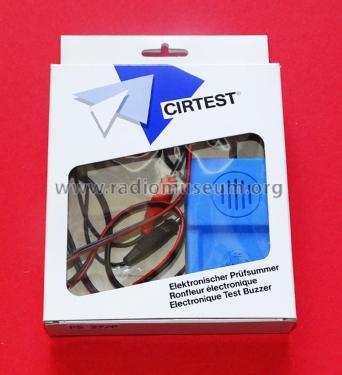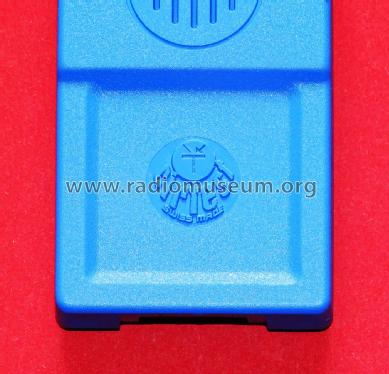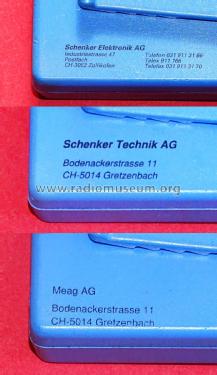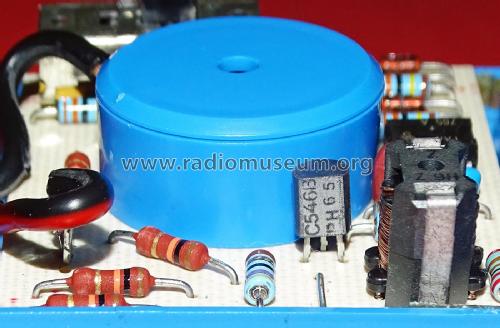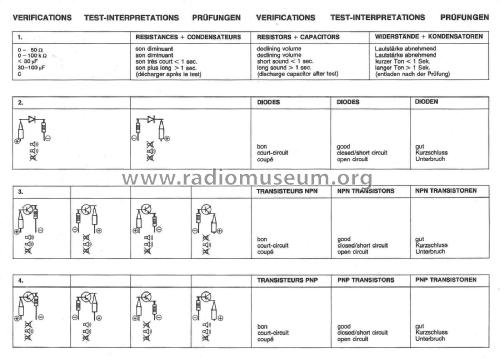Electronic Test Buzzer - Elektronischer Prüfsummer - Durchgangsprüfer Cirtest (2nd generation)
Meag AG; Gretzenbach
- Country
- Switzerland
- Manufacturer / Brand
- Meag AG; Gretzenbach
- Year
- 1980 ??
- Category
- Service- or Lab Equipment
- Radiomuseum.org ID
- 356777
- Number of Transistors
- 1
- Wave bands
- - without
- Power type and voltage
- Dry Batteries / AA: 3 x 1.5 Volt
- Loudspeaker
- - - No sound reproduction output.
- Material
- Plastics (no bakelite or catalin)
- from Radiomuseum.org
- Model: Electronic Test Buzzer - Elektronischer Prüfsummer - Durchgangsprüfer Cirtest - Meag AG; Gretzenbach
- Shape
- Very small Portable or Pocket-Set (Handheld) < 8 inch.
- Dimensions (WHD)
- 100 x 60 x 26 mm / 3.9 x 2.4 x 1 inch
- Notes
-
The original Cirtest Electronic Test Buzzer was patented and manufactured by the company Schori in Bern. It was housed in a hammer green metal case and used one 3LR12 4.5 V battery. The second generation Cirtest, housed in a blue plastic case and powered by three 1.5 V AA batteries, was sold by Schenker Elektronik AG in Zollikofen, before becoming Schenker Technik AG in Gretzenbach. Production of various versions of this model continued after the assets of Schenker were absorbed by Meag AG in 1979. The devices were labelled Schenker Elektronik, Schenker Technik or Meag, and these three different names are to be found on the devices themselves, while the pcbs are still labelled Schori. The circuit uses one BC546B transistor and one TAA765A op amp; or two BC546B and one BC556B or BC212 transistor in place of the TAA765A.
Unlike some continuity testers, Cirtests emit a musical note that can be useful for diagnostic work, as the pitch and volume of the sound varies with the resistance and capacitance of the circuit under test. With experience, this audio signal can be readily interpreted by the user, while his hands and eyes are free for testing work. Hence the device was popularly known by many technicians as a 'Sonnette', although its official name in French is a 'Ronfleur electronique' (Electronic buzzer). One version has a switch to select a range of 0-50 Ω for testing wiring, pcbs, etc, or 0-100 KΩ for resistors, diodes, transistors, and capacitors up to 100 µF. The test voltage range is 0-42 V and the test current is about 0.22 mA.
The piezoelectric sound transducer of the first generation Cirtest was sensitive to temperature, and it failed if the device were allowed to warm, for example by being stored in a sunny place. Spare transducers were available. The second generation versions do not suffer from this problem, but they have the disadvantage that the electronic circuitry drains a small continuous current from the battery, even when the probes are not in contact, so that it is advisable to remove the batteries to prevent them from being depleted if the device is not used for some time.
- Net weight (2.2 lb = 1 kg)
- 0.170 kg / 0 lb 6 oz (0.374 lb)
- Mentioned in
- - - Manufacturers Literature (Manufacturer's Verifications and Test Interpretations)
- Author
- Model page created by Bruce Taylor. See "Data change" for further contributors.
- Other Models
-
Here you find 1 models, 1 with images and 0 with schematics for wireless sets etc. In French: TSF for Télégraphie sans fil.
All listed radios etc. from Meag AG; Gretzenbach
Collections
The model Electronic Test Buzzer - Elektronischer Prüfsummer - Durchgangsprüfer is part of the collections of the following members.
